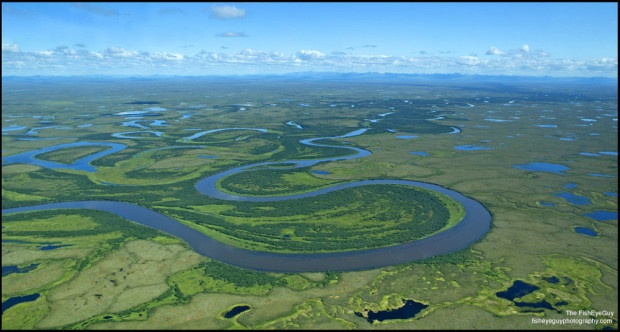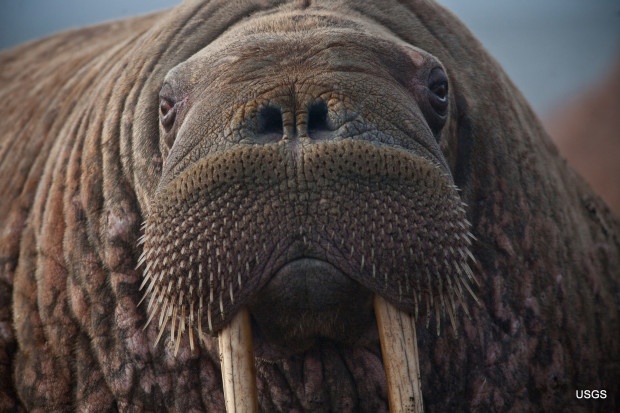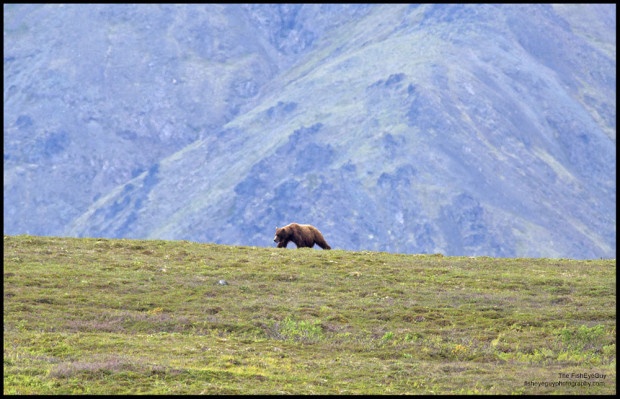We have much more to do and your continued support is needed now more than ever.
This Pristine and Glorious Wilderness is At Risk
Bristol Bay is a magical wonderland, supporting a ridiculous number of fish and wildlife species. Don’t take my word for it, take a look and decide for yourself. Browse the categories below to see what’s really at stake if mining activities are allowed. Is it worth the risk?
[vimeo]http://vimeo.com/43065314[/vimeo]
Pristine Waters
The Bristol Bay Watershed is comprised of 40,000 square miles of nearly pristine rivers, lakes, streams and tributaries. These waters have been untouched by development for thousands of years. This intricate system of waterways, and its high water quality, make Bristol Bay a unique habitat for fish and wildlife.

Culture
The majority (66%) of people living in the Bristol Bay region are Alaska Natives (Yup’ik-Eskimo, Aleut and Athabaskan). For over 4,000 years, these cultures have relied on subsistence fishing, hunting & gathering for food. Alaska Natives of Bristol Bay now represent one of the last intact, sustainable salmon-based cultures in the world.

Economy
The waters of Bristol Bay are home to the largest wild sockeye salmon fishery on Earth, accounting for one-third of the world’s supply. Bristol Bay’s sockeye salmon production is linked to 10,000 jobs, and created $1.5 billion in value across the U.S. in 2010.

Ecosystem
As a keystone species, Bristol Bay’s salmon support a variety of wildlife, including bears, wolves, moose, caribou, and waterfowl. Salmon also transport marine-derived nutrients that are vital to the health of the basin. The lack of human disruption & incredible biodiversity have allowed Bristol Bay’s ecosystem to remain fully functional.

Geography
Covering 40,000 square miles, Bristol Bay located in southwest Alaska. The wilderness setting includes tundra and wetlands, and a complex system of waterways leading to the bay. The Renewable Resources Coalition has fantastic maps showing the proposed mining activities in relation to Bristol Bay and major rivers.

Geology
This region in Alaska is also a major porphyry copper deposit — the largest undeveloped deposit of its kind in the world. There’s no doubt that copper plays an essential role in our daily lives, from cell phones to household appliances. However, there are other ways to meet the demand for copper, without endangering Bristol Bay.
It is also important to note that Alaska is one of the most seismically active areas of the world. This increases the chances of structural failure and toxic waste leaking into Bristol Bay’s waters.

Wildlife
I think we’ve established that Bristol Bay has an abundance of wildlife, but let’s take a closer look.
Fish
Bristol Bay supports the spawning and harvesting of all five species of wild Pacific salmon (king, sockeye, silver, chum, and pink). The Renewable Resources Coalition has compiled a wonderful list of species that depend on major rivers in the Bristol Bay Watershed.

Waterfowl & Migratory Birds
The region includes 27 globally-significant Important Bird Areas, meaning they are essential for bird conservation. Bristol Bay hosts one of the world’s greatest concentrations of seabird colonies, while four migratory flyways overlap there as well.

Land Mammals
The area is a major route for caribou migration, and home to some 10,000 brown bears. Bristol Bay supports a number of other land mammals including wolves, foxes, porcupines, wolverines, lynx and more.

Marine Mammals
Bristol Bay provides critical habitat for the world’s most endangered whale (fewer than 100 individuals), the North Pacific right whale, in addition to belugas and orcas. The region hosts 1 of only 2 populations of freshwater seals in the world, the Pacific walrus, and a number of other marine mammals.

Recreation
Visitors to the area can enjoy kayaking, flightseeing, hiking, camping, cultural tours, fishing, hunting, Native arts & crafts and more. Bristol Bay has been deemed an “angler’s paradise,” touting world famous trout and salmon. Sportfishing alone in Bristol Bay has an annual economic impact of $60 million.

Is This Where We Want to Experiment?
The copper deposits mentioned above have an estimated value of $200-300 billion. It’s easy to see why mining is attractive. But 10 billion tons of waste material would be produced by the proposed mine in Bristol Bay. That waste would need to be stored in a pit and monitored. Forever.
The Pebble Partnership says their engineering is advanced enough to prevent leaks, and eventual damage to the Bristol Bay ecosystem. But we know that hard rock mining activities pollute adjacent streams, wetlands and groundwater with toxic waste, why would Pebble mine be any different?
A mine the size of Pebble has never been built in North America. This mine is essentially an experiment — do we really want to roll the dice and risk the culture, economy, wildlife and sustainable fisheries of Bristol Bay?

Take Action, Spread the Word, Educate
![]() We need you to take action, again and again, until Bristol Bay is protected. And after you take action, we need you to become ambassadors for this issue, spread the word and educate others.
We need you to take action, again and again, until Bristol Bay is protected. And after you take action, we need you to become ambassadors for this issue, spread the word and educate others.
updated October 15, 2017





















